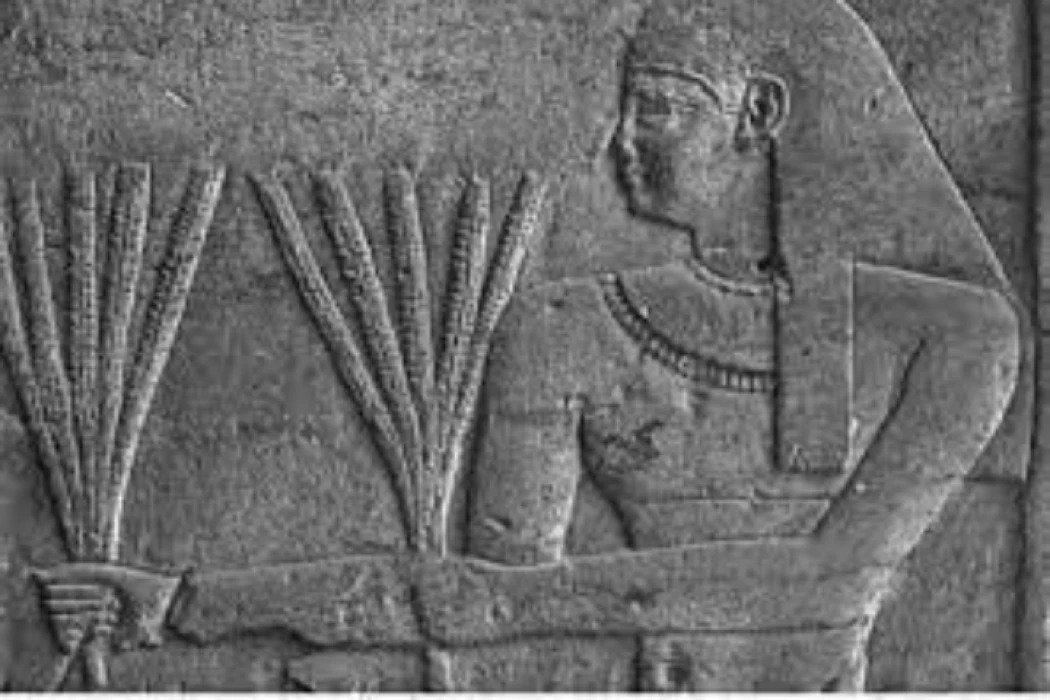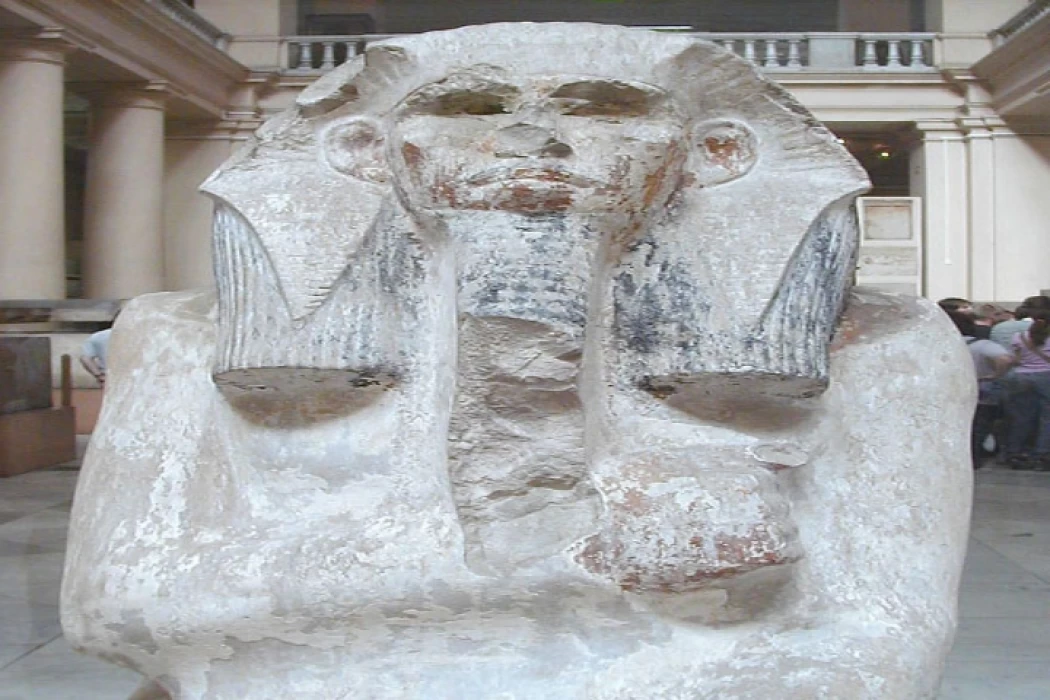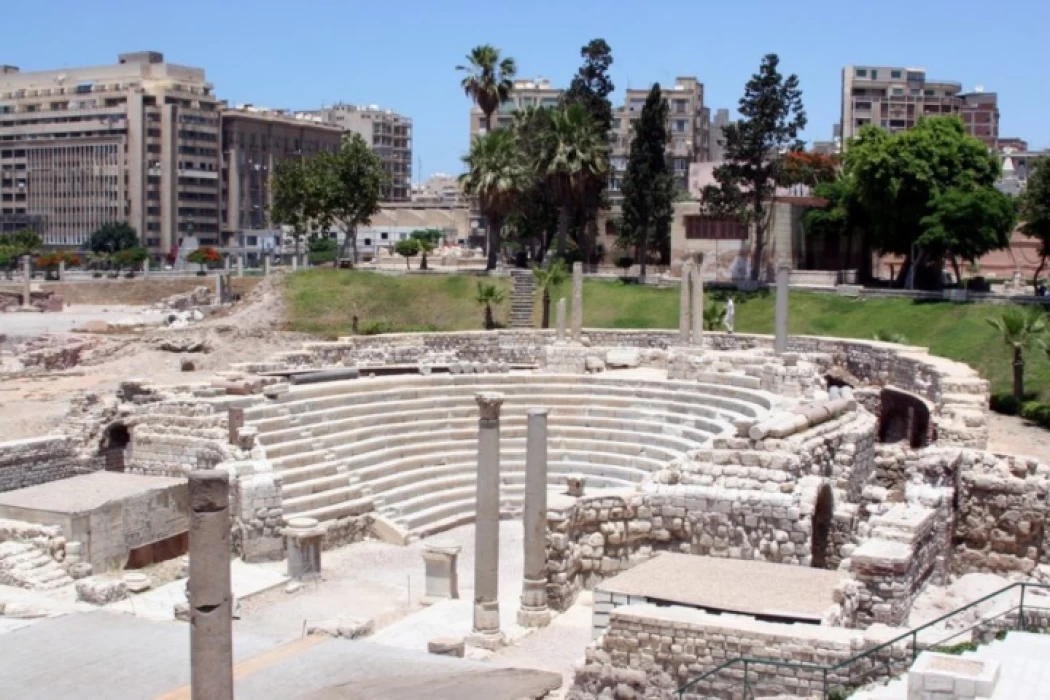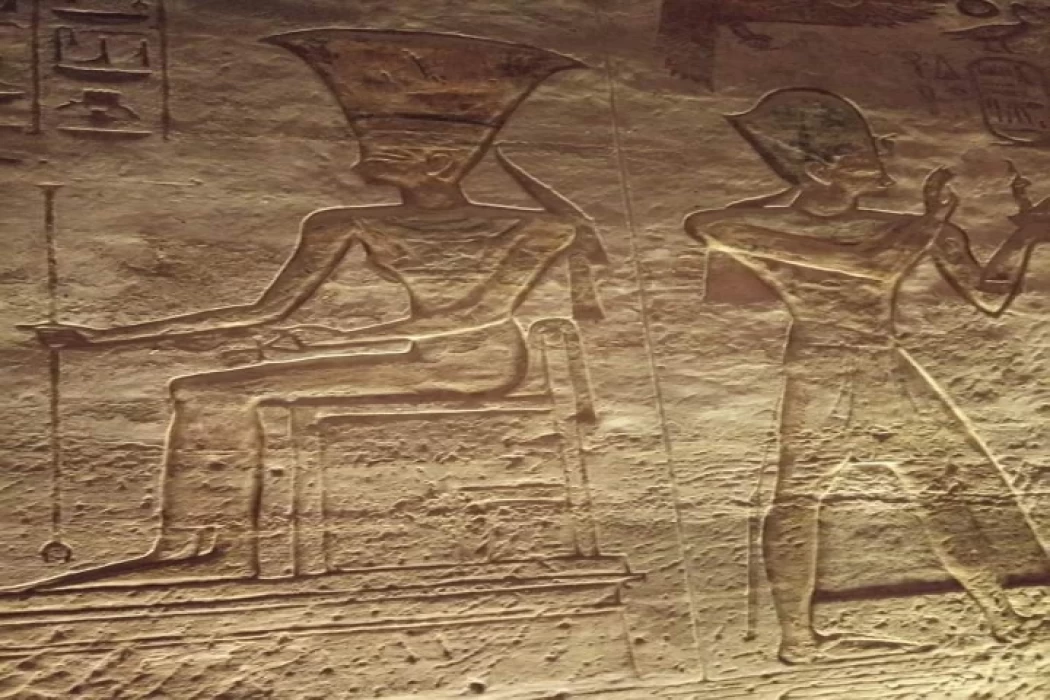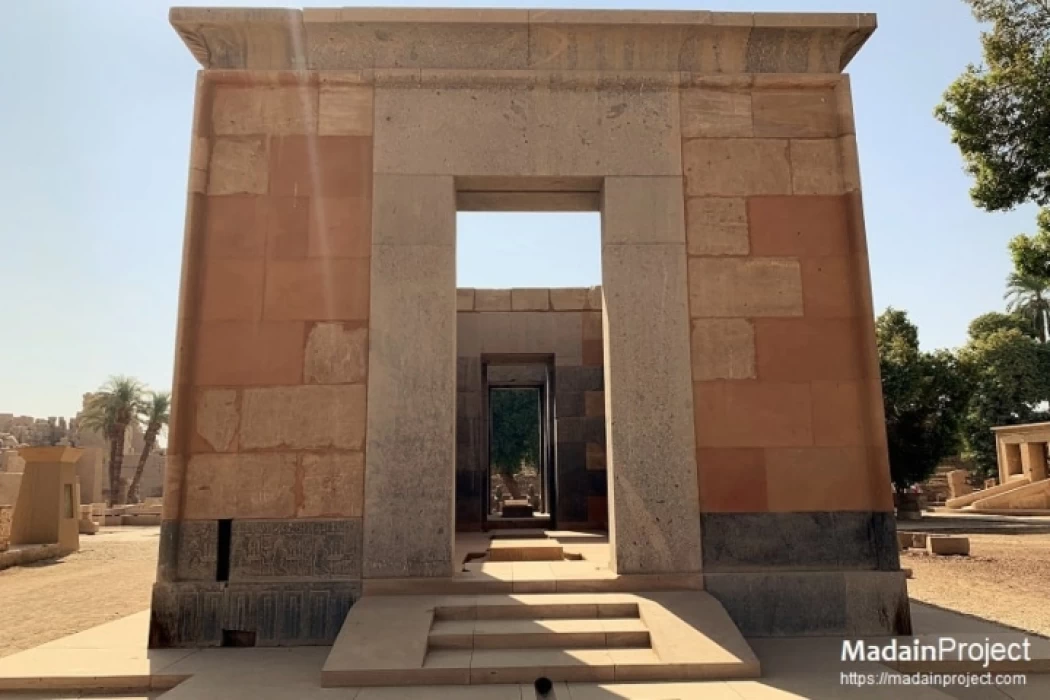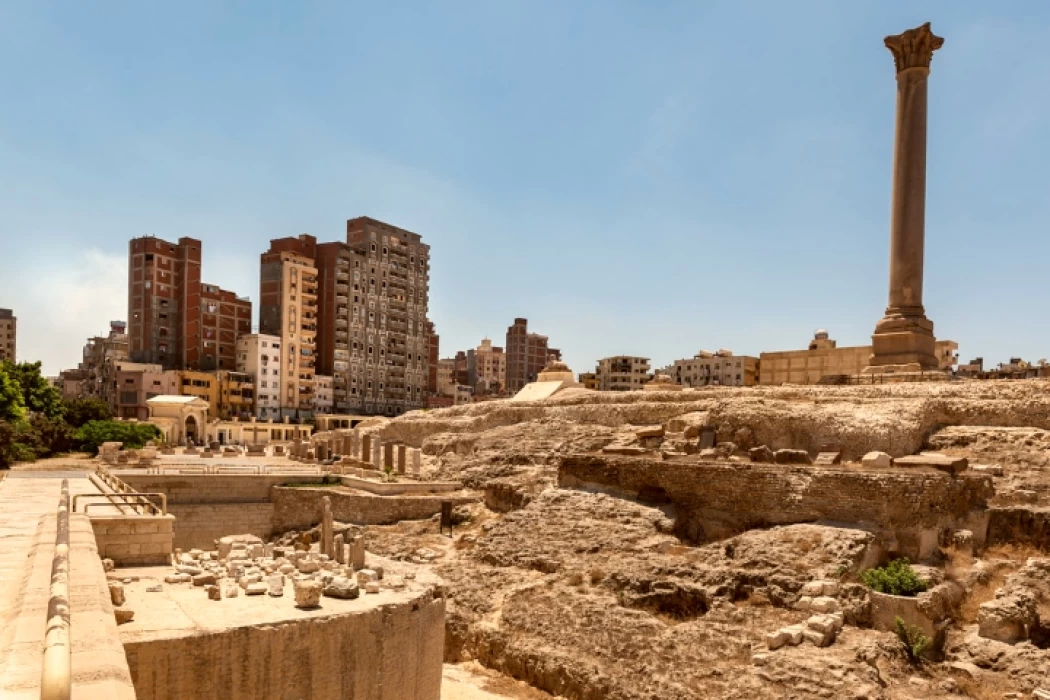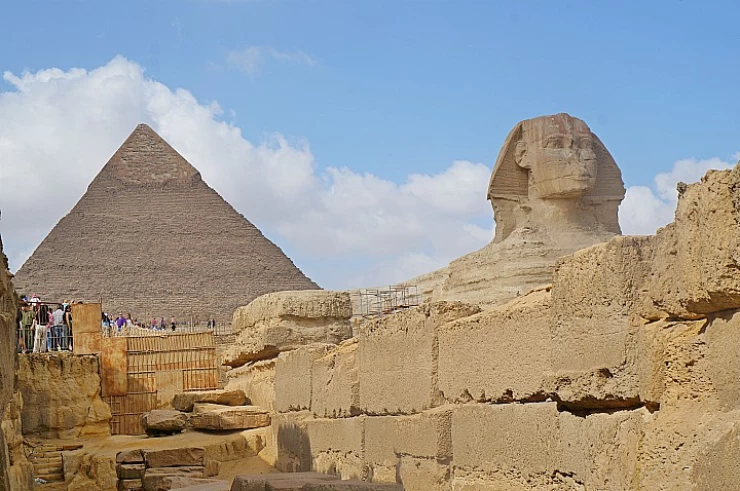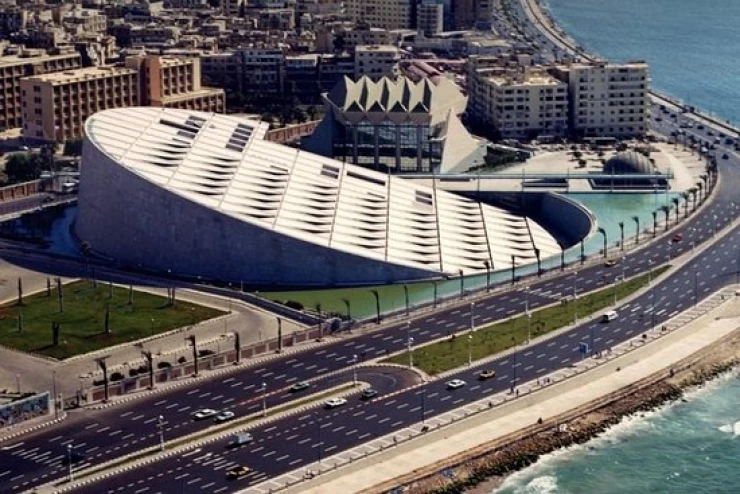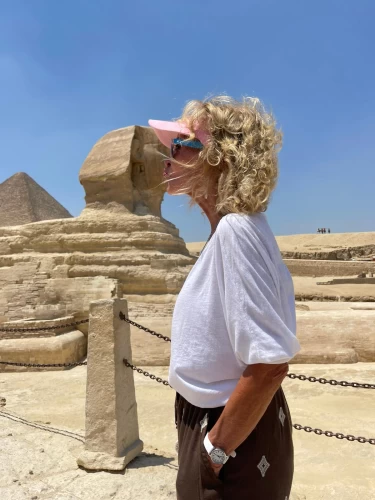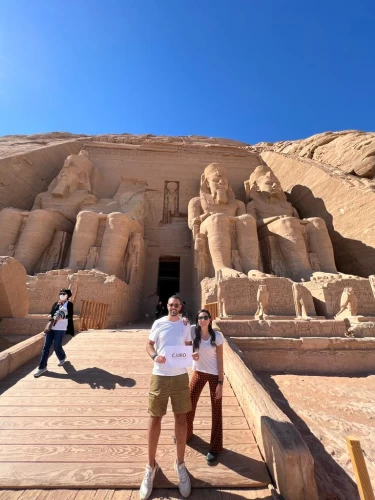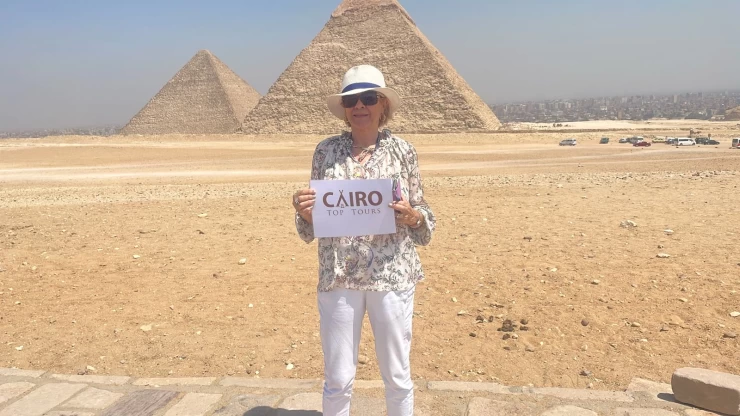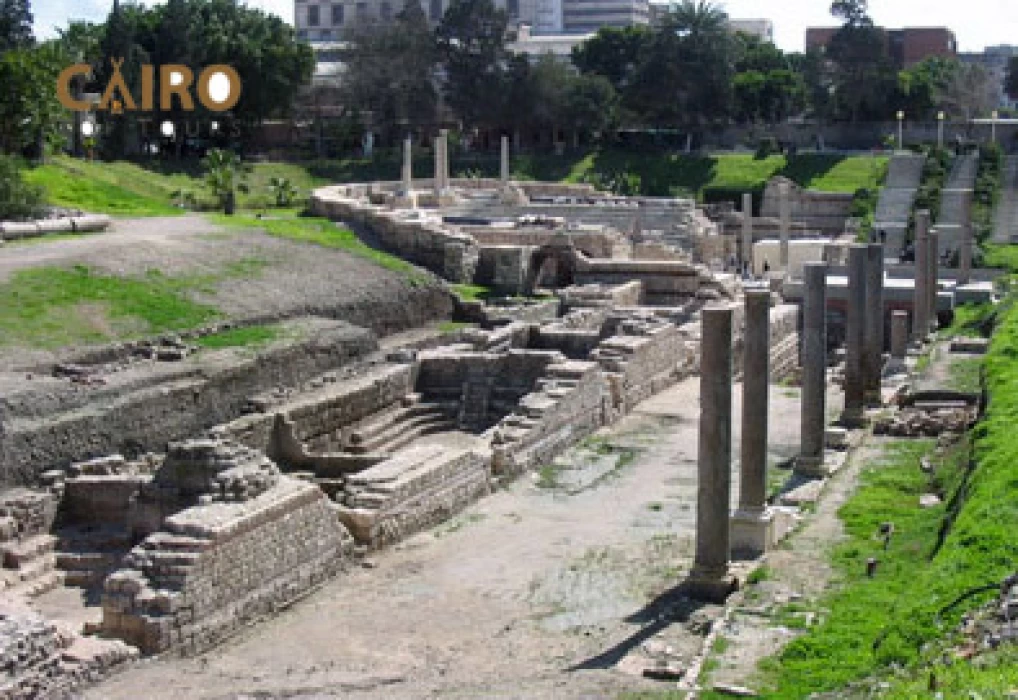
The Roman Amphitheatre in Alexandria
The Roman theater is an ancient Roman Theater located in the Kom el Deka area in the center of Alexandria in Egypt, which is one of the monuments of the Roman era and was erected at the beginning of the fourth century AD. There is another theater in Egypt, the belozium theater, which is located in the belozium archaeological area, 25 km east of the Suez Canal
This building was discovered by chance, during the removal of dirt for the search for the Tomb of Alexander the great by the Polish expedition in 1960. Archaeologists called it the Roman theater when the marble steps were discovered, but great controversy arose about the function of this monumental building. Its excavation took about 30 years.
The Polish mission continued its mission in partnership with the University of Alexandria until some study halls were discovered next to this Amphitheater in February 2004, and this will change the trend that the Roman amphitheater is a theater; this amphitheater could have been used as a large lecture hall for students, and in celebrations it was used as a theater. Thal
The building is listed in the form of a horseshoe or the letter u and consists of 13 rows of marble terraces numbered with Greek letters and numbers to organize the seating process, the first of which is from below and seats about 600 people. It is made of pink granite and there are 5 booths on top of these stands, two of which are still covered.the roof of these booths had domes based on a set of columns. the stands are based on a thick limestone wall surrounded by another wall. the two walls were connected by a set of arches and vaults, where the outer wall is a strong support for the inner wall. There are also two Mosaic halls with geometric motifs in the entrance, which is located to the West
It is one of the most important monuments of the Roman era, the fourth largest Roman Theater in the world, and the only one in Egypt, and was erected at the beginning of the fourth century AD, and is located in the Kom el Deka area of Alexandria
Discovery:
This building was discovered by chance, during the removal of dirt for the search for the Tomb of Alexander the great by the Polish expedition in 1960. Archaeologists called it the Roman theater when the marble steps were discovered, but great controversy arose about the function of this monumental building. Its excavation took about 30 years.
Immediately, the excavation and excavation works were started by the( Greco-Roman museum ) represented by the Egyptian Antiquities Department and (the Polish mission ) represented by the Mediterranean Antiquities Center to reveal to us a unique architectural style of Egyptian-Roman antiquities.
The ages that have passed since this monument
ms4 confirms that three eras have passed over these monuments (Roman, Christian, and Islamic) The style of architecture, materials, and architectural elements used in it compared to other buildings erected in this period, indicates that the building has passed through three eras of inscriptions and drawings found on parts of the ruins and there is a common story to discover this important monument (Roman theater) where pure chance played a major role in revealing this important monument, which is rightly considered a symbol of Roman architecture, this site occupied an earthen Hill called Tell Kom the bench, the building was discovered during the removal of dirt for the search for the greater Alexander cemetery by the Polish expedition In 1960, archaeologists named it the Roman theater when marble steps were discovered, but there was a great controversy about the function of this archaeological building.
The number of years of excavation of this monument :
ms4 has taken about 30 years to excavate. The Polish mission continued its research in partnership with Alexandria University until some study halls were discovered next to this Amphitheater in February 2004, which changed the prevailing thought at that time that the Roman amphitheater was a theater, as this amphitheater could have been used as a large lecture hall for students, and used as a theater during celebrations.
His design :
The building is listed in the form of a horseshoe or the letter u and consists of 13 rows of marble terraces numbered with Greek letters and numbers to organize the seating process, the first of which is from the bottom made of very hard stones used by the construction engineer as the basis for the rest of the terraces.
First: runway capacity and description
The amphitheater accommodates about 600 people and is made of pink granite and there are five booths on top of these stands, of which only two out of the five booths remained, as the other three of them fell on the impact of strong earthquakes suffered by Alexandria in the sixth century AD.the roof of these booths had domes based on a set of columns and the aim of building these domes was to protect the seated from external weather factors such as rain and sun heat, in addition to its main function in the process of good sound conduction.
Second: the remains of columns from different eras, arches and vaults
The terraces are based on a thick limestone wall surrounded by another wall, and the two walls have been connected by a set of arches and vaults, where the outer wall is a strong support for the inner wall.
Third: brick mortar and architectural role
ms6the red brick madamik was used in this wall, which is the prevailing style in Roman buildings in general, as it has an architectural role in strengthening and it also gives an aesthetic form to the building. a corridor covered with vaults surrounded the building, which was used by the building workers. a 45-meter platform with a depth of 38 meters made of wood, fixed by two marble pillars, was located in the middle of the amphitheater. it was used as a place for playing music( orchestra ) and also two Mosaic halls with geometric decorations in the entrance, which was located on the the West in the Byzantine era
Stage uses
First, a hearing room:
Where there were many uses throughout the ages, in Roman times it was called (Theater Street )
The building was used as a music hall, where listening elements were available thanks to the presence of the dome and the orchestra area.
Waiting places:
The building in the Roman era had two entrances, one on the north side and the other on the south side through brackets in the outer wall, which were then closed in the Byzantine era, besides there were two large rooms at the entrance, one on the north side and the other on the south side, which were used as waiting places.
Tourist attractions
Now it is used as a tourist shrine, in addition to holding cultural concerts in the presence of the most important international bands, as well as holding many art festivals
As for the Antiquities displayed in the area around the theater, several ancient Egyptian antiquities, most of which date back to the New Kingdom era, were found in the waters of the Mediterranean Sea, among the antiquities that were thrown into the water during the Middle Ages to secure the city from the dangers of tides, where they were thrown into the water to replace the wave bumpers and to work to reduce the erosion of the beaches, and this was done by Slavs and kings of Egypt.
Salvage of sunken monuments:
ms5u Then, in the modern era, the Antiquities Authority, in conjunction with foreign missions, recovered these pieces and displayed them after they were washed with fresh water to get rid of the salts stuck in them, where a large rectangular basin was prepared in that area specifically for that.
These effects are :
A large panel with a depiction of King Seti I offering an offering to an unclear body and a second panel with an inscription of King Seti I depicting the body of the idol SETI
There is also a sphinx-shaped statue of King Ramses II and a sphinx-shaped statue of King Basmatik Neferdayeb RA from the 26th Dynasty and a plaque with The Shape of Ptah on it
As well as a painting with the head of the cow “Hathor
It is a statue in the form of a Sphinx of King " Ramses II” and a group of Roman Baths, which there is an example in the eastern abukir, and the area of the sawari column
This is in addition to a collection of remains of columns from different eras
Latest Articles
Admin
Neper God Of Grain
Neper was the deity of grains, particularly cereals that were important in Ancient Egypt, such as wheat and barley. It was stated that he foretold when the crops would grow, be harvested, and disappear.
Admin
Djoser
Djoser was an ancient Egyptian pharaoh of the 3rd Dynasty during the Old Kingdom and was the founder of that epoch. He is also known by his Hellenized names Tosorthros (from Manetho) and Sesorthos (from Eusebius). He was the son of King Khasekhemwy and Queen Nimaathap, but whether he was also the direct successor to their throne is unclear. Most Ramesside king lists identify a king named Nebka as preceding him, but there are difficulties in connecting that name with contemporary Horus names, so some Egyptologists question the received throne sequence. Djoser is known for his step pyramid, which is the earliest colossal stone building in ancient Egypt
Admin
Kom Al Dikka Alexandria
Kom El Deka, also known as Kom el-Dikka, is a neighborhood and archaeological site in Alexandria, Egypt. Early Kom El-Dikka was a well-off residential area, and later it was a major civic center in Alexandria, with a bath complex (thermae), auditoria (lecture halls), and a theatre.
Admin
The God Anuket
Anuket, in Egyptian religion, the patron deity of the Nile River. Anuket is normally depicted as a beautiful woman wearing a crown of reeds and ostrich feathers and accompanied by a gazelle.
Admin
The Red Chapel of Hatshepsut
The Red Chapel of Hatshepsut or the Chapelle rouge was a religious shrine in Ancient Egypt. The chapel was originally constructed as a barque shrine during the reign of Hatshepsut. She was the fifth pharaoh of the Eighteenth Dynasty from approximately 1479 to 1458 BC.
Admin
The Serapeum of Alexandria
The Serapeum of Alexandria in the Ptolemaic Kingdom was an ancient Greek temple built by Ptolemy III Euergetes (reigned 246–222 BC) and dedicated to Serapis, who was made the protector of Alexandria, Egypt. There are also signs of Harpocrates. It has been referred to as the daughter of the Library of Alexandria.
